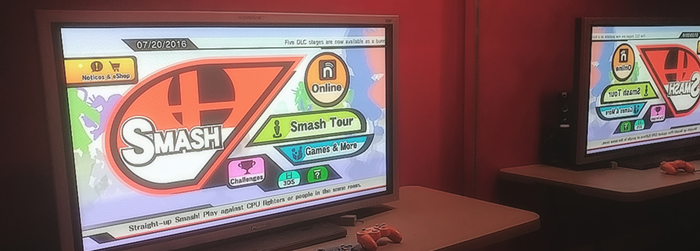
Dying Malls and Their Arcade Dreams
I’m sitting in a former Victoria’s Secret, the carpets pink and the molding a thick, ornate white. Around the corner are the dressing rooms, empty of curtains but with a few consoles and their accompanying controllers, the soundtrack for games of Smash leaking through the rooms where women used to try on bras.
At some point this Victoria’s Secret made the transition to Akiba Arcade, a small Japanese arcade full of rhythm games with large drums and bright boxes of light and sound. It’s not the standard transition for old lingerie storefronts, but it’s become a part of the fall of the American mall, and with it, at least anecdotally the rebirth of the arcade.

Arcades are expensive propositions in the US. The Lost Arcade, a documentary about the way that the Chinatown Fair changed from grungy hangout spot for a neighborhood to polished family fun land is just a generic picture of the 21st century arcade. How one day there were arcades with Street Fighter machines and today there are just small storefronts with glitzy children’s amusements. Smaller communities are dominated by the corporate entities, big family funplexes like GattiTown, Dave & Busters and others where playspace is equally distributed between exhausted parents with their screaming children in tow and the “traditional” arcade experience. The gritty arcade of American teenagers, where you slapped quarters on a cab of Ms. Pac-Man, where your money from your paper route went to feed another round of Gauntlet has ceased to exist, if it ever really did.
Finding your way to Akiba is its own sort of journey. From Central Kentucky, where I call home, to Columbus is a 3 hour drive to a near deserted mall. It’s not empty, but the chain stores – save a few – have left in the face of small local businesses, a shop dedicated to Star Trek memorabilia and a church. If the Vice show Abandoned taught me anything it’s that a church in a mall is a sign of impending death, like a priest coming to your bedside in the hospital to have you confess your sins. Near the end of one arm of the mall, next to a church and across from a bridal store, sits the heavy crown molding edifice of Akiba, a low murmur of anime music beckoning welcomingly from the hall.
Akiba isn’t an arcade the way you’d see remade in Stranger Things. It may be closer to the Japanese arcade chain Round One, but a mom and pop operation. There is no Galaga machine here, but there are three JuBeat’s and several DDR machines. This is a different era for arcade machines, where to find the one you look for you have to comb through rarely updated forum lists or use websites like Zenius-i-Vanisher to find out whether an arcade even has Beatmania IIDX
I’ve visited a lot of arcades this year — from a Round One outside of Chicago in an effectively abandoned mall to the glittering rows of pinball machines and ancient consoles in the hall of Ramada in Louisville. The culture is much the same — the same bated breath excitement over a new machine, the cheering when someone does something truly exceptional, the techies coming by on the regular to pull up a cab top or peak underneath the seat of a Initial D racer. The crowds may not look the same, Louisville Arcade Expo veers towards older men and Akiba was hosting a cosplay gathering where I stopped by the second time, but the excitement is there.
There’s no quarters in these arcades anymore. There’s no clink of metal sliding home, just free to play passes and corners of malls where the culture is still kept alive, one game at a time.


